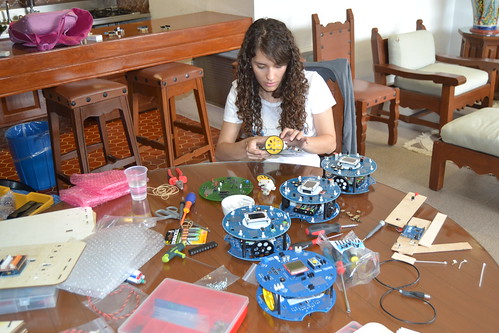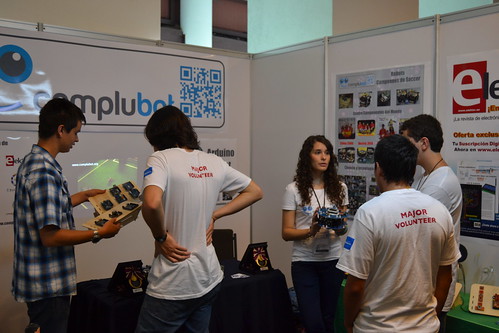How many robots run on Arduino? I really don’t know. The guys from Complubot keep on sending pictures from the robots they are finding at the Robo Cup in Mexico DF. Want to see some pictures? Look at the following:

(c) 2012 Complubot, Japanese Team on Soccer B
The Japanese Team on Soccer B have been working with Arduino for 3 years now. The robots on the picture are only using our IDE, as they made their own PCBs to host 8 InfraRed sensors, a compass, and the motor drivers. Take a closer look at it on the next picture.
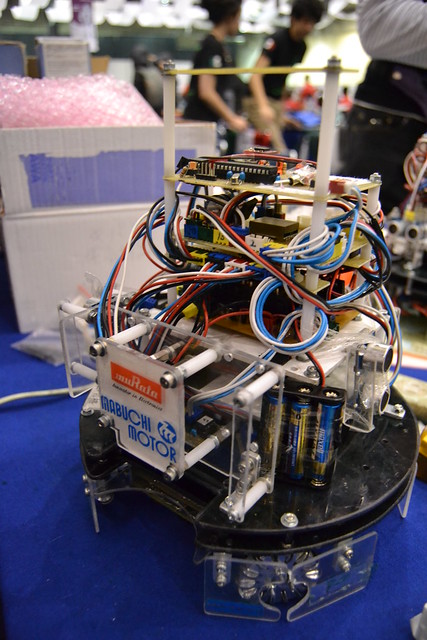
(c) 2012 Complubot, Japanese Soccer B team at RCJ Mexico DF
On the other hand, the German team, running on an Arduino Mega, are controlling 60 InfraRed sensors to detect the ball on the field. They got the 1st price on Soccer A Open and have been using Arduino for just one year.

(c) 2012 Complubot, German Soccer A Open team (winner)
I bet you want to see that robot closer, 60 IR sensors are quite many. It also controls 4 UltraSound sensors and 1 Compass. Quite an achievement. Look at this:

(c) 2012 Complubot, German Soccer A Open robot
Well, the picture isn’t very sharp, but you can clearly see the amount of sensors on that machine. I have to make some more research to understand what is the black plastic thingy on the top board of the robot. It feels like some sort of exhaust pipe. The black dots on the red PCB are the IR sensors.
If there is a team that beats all about the amount of time they have been working with Arduino, is the Mexican coming from UNAM. On the Soccer B category, these guys have been running their robot on Arduino for only 2 months!! They are however controlling 8 IR sensors and one Compass over I2C.

(c) 2012 Complubot, Mexican (UNAM) Soccer B team
Also from Mexico, this time participating on the Rescue competition, we find a team with a really broad age range. The team from Monterrey ranges between 10 and 19 and made a robot controlled by Arduino Uno.
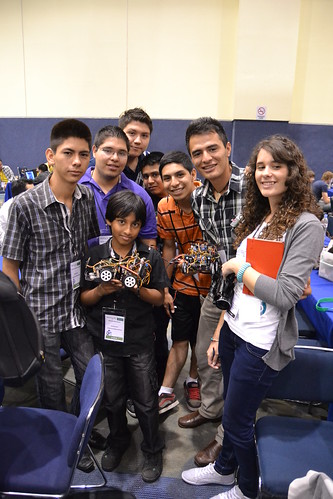
(c) 2012 Complubot, Moterrey Rescue Team
The Swiss team has been using Arduino during 2 years and are the only one in my list that have started using a camera. They run their bots on Arduino Mega and control 12 IR and 4 US sensors.
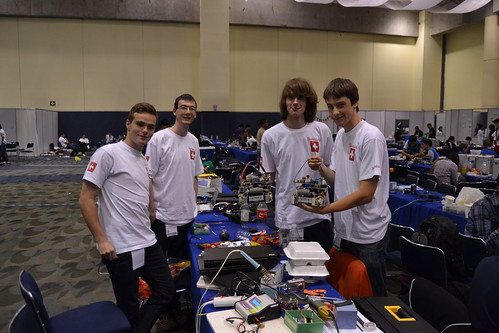
(c) 2012 Complubot, Swiss Soccer B team
If there is a country that is well know for soccer that is Brazil. Their Rescue A team at the RCJ looks like this:
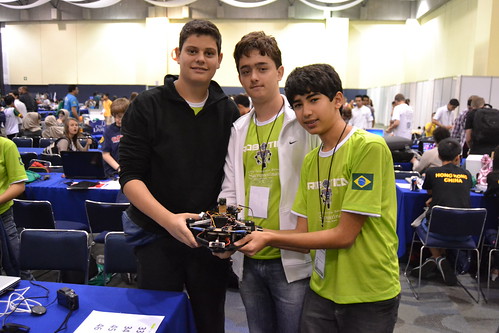
(c) 2012 Complubot, Brazil Rescue A team
And their robots are pretty easy to spot, pitch black with an Arduino Mega in the stomach:
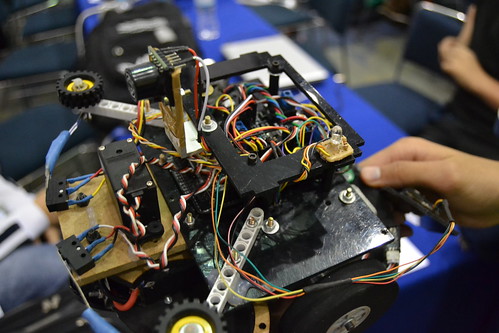
(c) 2012 Complubot, Brazil Rescue A robot
To close the post, I want to show you an image of my favorite robot so far. It is the one made by one of the Mexican teams again in the Soccer B category. It’s platforms are made in wood and it is a masterpiece of a combination of glue-gun and breadboard. Sometimes we think we need so much to build things, and others come to remind us how easy it is to make things happen with whatever you have in hand. If there was a price to the most low-tech solution at this competition, this team would win or be among the finalists.

(c) 2012 Complubot, Mexican Low-Tech team 
Oh, yes … and a photo of the team:
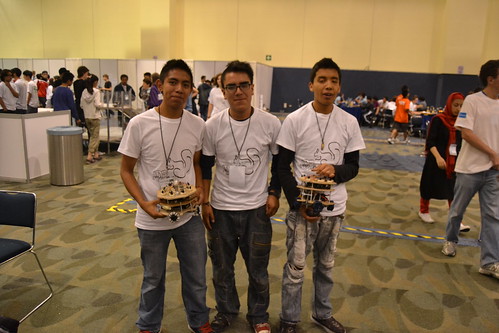
(c) 2012 Complubot, Mexican Low-Tech Champions
Soon: some more images and thoughts about The Arduino Robot, after one week of beta testing in Mexico, stay tuned!














